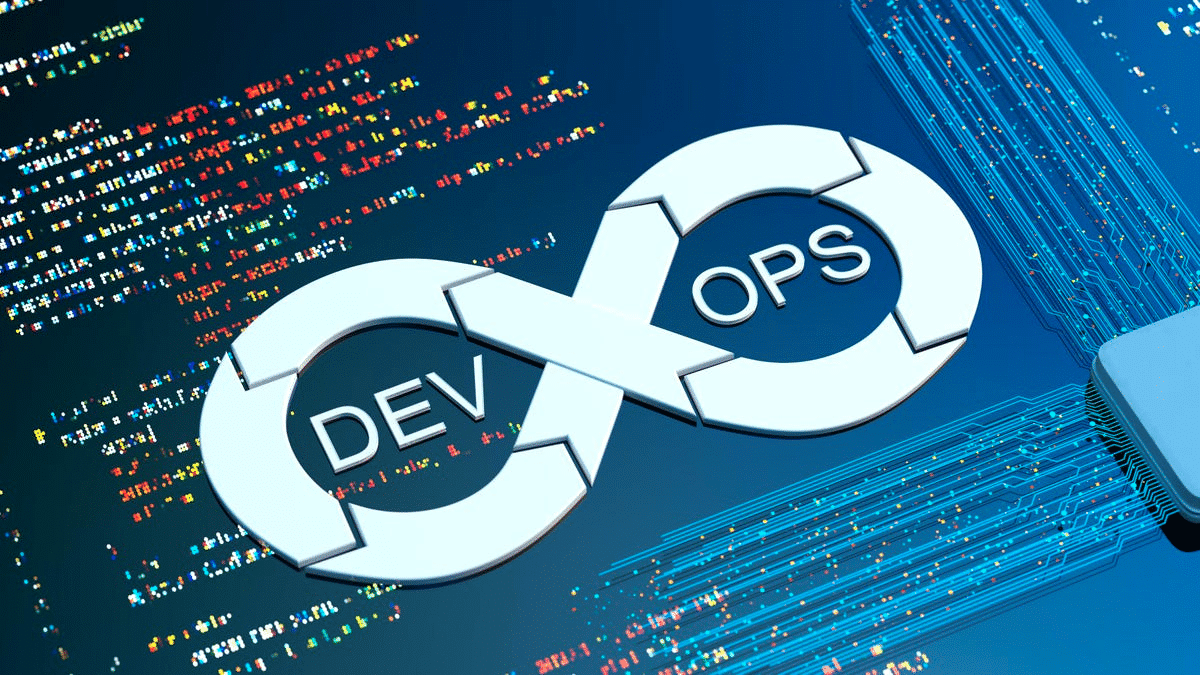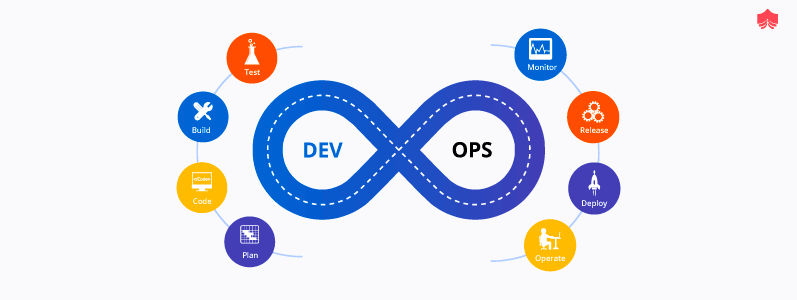How Does Devops Change The Way Cloud Development Works?

There are a few essential factors that play a crucial role in creating a significant gap between low-performing organisations and high-performing enterprises. Enterprise success in recent years has been defined by factors such as frequent deployments, rapid load times, accelerated recovery time, and decreasing change failure rate.
In spite of the fact that many new businesses have been filling this void by making cloud-based investments, some of them have recently come to the conclusion that they need to upgrade their architecture and search elsewhere for a more reliable and foolproof option. Becoming a DevOps experts for cloud is one answer they’ve found to their problem.
At its core, DevOps in cloud development means combining the development and operations team to automate the agile process and get rid of the delay in software development. Together, DevOps and cloud computing represent a natural progression of two development methodologies that place a premium on acceleration and quality. One that is being used by both businesses and cloud software development company.
What Is Devops?
DevOps is an acronym for “development operations,” which describes how application developers and IT administrators work together to complete projects.
DevOps, in its broadest sense, is a mindset that encourages improved coordination and cooperation across these groups and the rest of the company. DevOps, at its most basic, refers to the practise of integrating recursive software development with automated and programmable deployment and maintenance of IT infrastructure.
The concept encompasses alterations to the company’s ethos, such as fostering mutual respect and unity among software engineers and IT managers, and coordinating the development of new technologies with business needs. Azure DevOps engineers play a pivotal role in implementing these changes, leveraging their expertise to streamline workflows and enhance collaboration across departments. DevOps has the potential to alter the entire software distribution pipeline in addition to the associated services, roles, responsibilities, technologies, and processes.
While not technically anything, common practises are used in DevOps settings. In this category, we find:
- Automation-focused tools for CI/CD (continuous integration and delivery) and CI/CD (continuous deployment).
- Technologies and tools that facilitate the implementation of DevOps, such as those for real-time monitoring, issue resolution, configuration management, and collaboration.
- DevOps practises integrated with cloud computing, microservices, and containers.
DevOps: What’s the Deal?
DevOps refers to a set of practises that aim to enhance the software development lifecycle as a whole. Plan, code, build, test, release, deploy, run, monitor, and — through feedback — plan; this completes one iteration of the DevOps process and begins anew.
With DevOps, the IT team should be able to build code that not only fully satisfies user needs, but also deploys quickly and operates well right out of the box. To achieve this, businesses leverage both their internal culture and technological resources.
Developers and stakeholders discuss the software project, and developers create incremental updates that are released in isolation.
IT teams utilise continuous integration and continuous deployment pipelines and other forms of automation to swiftly transfer code between stages of development and deployment. Implementing CI CD Security Best Practices is crucial in this context to ensure that security measures are integrated into every stage of the pipeline, minimizing vulnerabilities and protecting the codebase. To make sure new releases are up to par, teams can review modifications in real time and enforce policies.
It’s not hard to whip together a piece of software, but it is difficult to create something that actually functions properly. Dedicated DevOps engineers employ containers or other techniques to ensure that their code behaves consistently across the development, testing, and production phases.
To ensure that any issues can be pinpointed, they roll out updates one by one. Team success depends on configuration management’s ability to maintain stable deployment and hosting conditions. Using a combination of blameless post-mortem investigations and constant feedback channels, they are able to fix issues they find in production and make necessary adjustments to the code.
Developers may provide live software support, which places the onus on them to think about issues that could arise during runtime. Software design meetings may include input from IT operations administrators who can advise on the most effective and secure use of available resources.
Non-recriminatory investigations can get input from anyone who wishes to participate. The more these professionals work together and share knowledge, the more they will be able to promote a DevOps mindset and culture.
The Natural Connection Between The Cloud And Devops

DevOps automation services, traditionally marketed as a cloud-based solution, are used by businesses so that they can react to changing market conditions and customer demands in near real time. With this in mind, it’s simple to see the parallels between the two methods. This approach has been widely adopted by developers to streamline workflows and improve deployment speed.
DevOps automation relies on the standardised, centralised platform provided by the cloud computing architecture for developing, testing, and releasing software. This lagged in the past (before cloud-based DevOps) because the distributed style of some enterprise software didn’t combine well with the need for centralised software deployment.
DevOps, in addition to extensive continuous integration and continuous development, is now supported by the majority of cloud computing providers’ platforms.
The intimate interaction between on-premises automation of DevOps cloud development and the cloud itself reduces the associated costs and improves process oversight. How much cloud computing aids in the DevOps transformation depends on how widely adopted cloud platforms are.
Reduced resource tracking is one of the many benefits of moving DevOps to the cloud. The cloud operates on a usage-based accounting model that keeps tabs on how much of each resource is used and by whom (developer, programme, user, data, etc.). The lack of this functionality in the conventional, non-DevOps cloud infrastructure made it challenging to monitor the expenditures for software development personnel. If you want to know how DevOps helps out with cloud native, this is the answer.
Leveraging cloud infrastructure management services can help streamline monitoring, optimize resource allocation, and control costs effectively. These services enhance visibility and automation, ensuring efficient cloud operations.
Why Are Cloud-Based Applications Increasingly Using Devops?
Developers favour DevOps because it streamlines and quickens their work. However, they are aware that a purely DevOps integration (without a cloud-first mentality) would not solve all of their problems, as doing so will necessitate spending money on new software and hardware, which causes engineers to delay deployment.
The combination of DevOps and cloud deployment has many advantages.
The software can be ready for market faster with the DevOps based cloud model thanks to the shortened development process and access to the real-time development environments.
Infrastructure as code, which is included in DevOps for cloud, can be used in conjunction with automation technologies to reduce system maintenance and cloud complexity.
By mechanising routine processes, we can ensure that the DevOps cloud platform’s security design is foolproof.
The cloud-based DevOps approach includes continuous operations, which not only remove downtime issues but also permit developers to build stateless apps, which in turn enhances the availability of applications and, consequently, leads to high customer satisfaction.
DevOps in the cloud allows businesses to expand their operations while cutting costs and expanding their reach around the world.
These advantages of cloud and DevOps use reshape how businesses approach digitalization. However, while DevOps for cloud has many potential benefits, the real test will be how it affects the development process in practise.
Why Are Cloud Devops Services So Important To The Software Development Life Cycle?
Together, cloud computing and the DevOps movement are redefining what it means for a business to move quickly and efficiently. What does this mean for software engineering, though? One benefit is that it makes it easier to overcome the time and effort drains that characterise the waterfall development method.
Development
Businesses can automate the development process with the help of most cloud-based applications. In addition to the simple incorporation of DevOps principles like CD/CI/CD, the DevOps for cloud model makes it simple and fast to automate the build procedure. This extreme degree of automation does more than only quicken the rate of development; it also removes the possibility of human errors.
Testing
Innovation in software creation is supported by the combination of DevOps and cloud services. When using cloud-based servers, developers don’t have to wait for hardware or servers to become available, like they would in a waterfall development process.
Partnering with teams who specialize in combining cloud computing services with DevOps is necessary to achieve the increased productivity and efficiency that results from doing so. But before you get there, it’s a good idea to establish a procedure for DevOps cloud infrastructure by understanding dbt core key differences, as this knowledge can influence how development and testing are approached.
Devops-Based Cloud Computing Is Where Software Development Is Go In The Future
Technology leaders have begun working on technical and organisational difficulties as DevOps for cloud continues to verify their combined worth to businesses. Adding cloud to a DevOps setting, however, would necessitate a shift in mentality.
DevOps is a necessary part of maximising the benefits of cloud computing, which is why it is being adopted by more and more businesses.
Keeping them compartmentalised and not utilising synergistic working relationships is a surefire way to guarantee failure in achieving the desired result. Based on the trends and possibilities we’ve outlined, it’s clear that we’re entering uncharted territory that calls for an appreciation of and commitment to DevOps cloud architecture.
DevOps consulting services companies with in-house DevOps and cloud architects should be sought out at this stage. To guarantee that the software development journey supports innovation and is still fail-fast, they can guide businesses through the steps necessary to adopt agile DevOps and the cloud for digital transformation.

